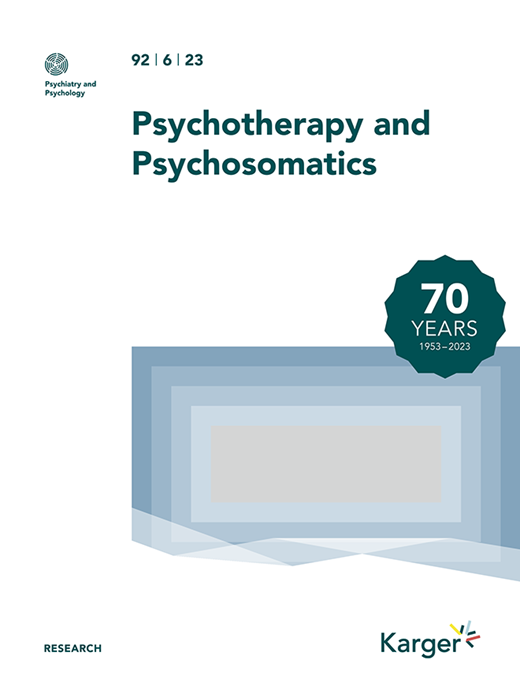What is mental pain? A systematic review and metasynthesis of qualitative research on the lived experience of mental pain.
IF 17.4
1区 医学
Q1 PSYCHIATRY
引用次数: 0
Abstract
INTRODUCTION Mental pain-a pain not primarily felt in the body-is a predictor of suicide and is often described as one of the most distressing aspects of depression. However, the absence of a clear definition hampers both research and clinical practice. This metasynthesis aims to characterize the lived experience of mental pain to inform the future development of a definition. METHODS We conducted a systematic search in MEDLINE, EMBASE, PsycINFO, CINAHL, and Web of Science to identify qualitative studies reporting first-person accounts of mental pain. Thematic synthesis was used to generate descriptive and analytical themes, drawing on semantic, clinical, and phenomenological insights. The quality of the primary studies was assessed using the Critical Appraisal Skills Programme (CASP), and the Confidence in the Evidence from Reviews of Qualitative Research (GRADE-CERQual) approach was applied to evaluate the findings. RESULTS The metasynthesis included 49 qualitative studies with 1,467 participants and led to the development of 22 themes and 85 subthemes. Mental pain was defined by five phenomenal features: unpleasant, immediate, identity-disrupting, invisible, and often perceived as worse than physical pain. It is also accompanied by unspecific psychological and physical manifestations. The emergence of mental pain can be conceptualized as a signal of a threatened sense of self in response to bodily, psychological, existential, or social adversity. Confidence in the findings was moderate due to methodological and reporting limitations. CONCLUSION A clearer understanding of mental pain may enhance clinical practice by helping clinicians better identify, understand, and respond to this form of suffering.什么是精神痛苦?精神痛苦生活经验定性研究的系统回顾与综合。
精神上的痛苦——一种主要不是在身体上感受到的痛苦——是自杀的前兆,通常被描述为抑郁症最令人痛苦的方面之一。然而,缺乏明确的定义阻碍了研究和临床实践。这种元合成的目的是表征精神痛苦的生活经验,以告知未来发展的定义。方法我们在MEDLINE, EMBASE, PsycINFO, CINAHL和Web of Science中进行了系统的检索,以确定报告第一人称精神疼痛的定性研究。主题综合用于生成描述性和分析性主题,利用语义,临床和现象学的见解。使用关键评估技能计划(CASP)评估初步研究的质量,并使用定性研究综述证据的置信度(GRADE-CERQual)方法评估研究结果。结果荟萃共纳入49项定性研究,共1467名受试者,共开发了22个主题和85个副主题。精神上的痛苦被定义为五个显著特征:令人不快的、即时的、扰乱身份的、无形的,并且通常被认为比身体上的痛苦更糟糕。它还伴有非特异性的心理和生理表现。精神疼痛的出现可以被概念化为对身体、心理、存在或社会逆境的自我威胁感的反应。由于方法和报告的限制,研究结果的可信度不高。结论对精神疼痛的认识可以帮助临床医生更好地识别、理解和应对这种形式的痛苦,从而提高临床实践水平。
本文章由计算机程序翻译,如有差异,请以英文原文为准。
求助全文
约1分钟内获得全文
求助全文
来源期刊

Psychotherapy and Psychosomatics
医学-精神病学
CiteScore
29.40
自引率
6.10%
发文量
46
期刊介绍:
Psychotherapy and Psychosomatics is a reputable journal that has been published since 1953. Over the years, it has gained recognition for its independence, originality, and methodological rigor. The journal has been at the forefront of research in psychosomatic medicine, psychotherapy research, and psychopharmacology, and has contributed to the development of new lines of research in these areas. It is now ranked among the world's most cited journals in the field.
As the official journal of the International College of Psychosomatic Medicine and the World Federation for Psychotherapy, Psychotherapy and Psychosomatics serves as a platform for discussing current and controversial issues and showcasing innovations in assessment and treatment. It offers a unique forum for cutting-edge thinking at the intersection of medical and behavioral sciences, catering to both practicing clinicians and researchers.
The journal is indexed in various databases and platforms such as PubMed, MEDLINE, Web of Science, Science Citation Index, Social Sciences Citation Index, Science Citation Index Expanded, BIOSIS Previews, Google Scholar, Academic Search, and Health Research Premium Collection, among others.
 求助内容:
求助内容: 应助结果提醒方式:
应助结果提醒方式:


